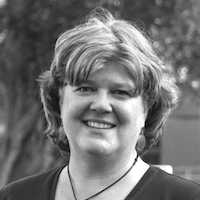Identity | Heidi Ballard
"Identities are not fixed. They are not fixed in time and they are not fixed in setting. Learning and identity are intertwined with what you do and who you interact with."

2017 Interview Highlights:
What’s your definition of identity?
One definition is that it’s the stories people tell about how they see themselves, how they feel others see them, and what kind of person they want to become. Identities are not fixed in time.
In my research, we talk a lot about roles and positioning, so watching the interaction really matters. In terms of the definitions of identity across the board, it’s situated and interactional.
Are you thinking about and/or measuring identity in ways that are distinct from what others are doing?
A lot of research out there assumes that identity is a lot more static, in the sense of assigning people to boxes and assuming their identities don’t change. Lots of research is survey-based and basically asks whether you see yourself as a scientist or not. So that’s something that I will completely unpack and say needs to be changed in all of my projects. It is simply not the only way that you can think about yourself with respect to science. I think that’s a difference between my work and that of some others.
The other thing I want to note has to do with the youth projects we’re working on. I was a high school and middle school science teacher for several years, so I know about multiple choice tests and standards. There are some things we want kids to learn about science from school. But in these informal settings, we’re really trying to see what aspects of science kids take up that they see as meaningful and consequential for their own lives.
And that’s important because maybe a kid who’s involved in collecting water quality data realizes that talking to people who pass by the collection site is also part of science. I don’t think of myself as a math person, but I’m a chatty person, so maybe I can still do science, and that’s a really important piece that’s different from some other ways that people think about identity. It’s also consistent with a lot of other folks who think about identity as a process, and a gerund, and that it’s iterative and generative and all those kinds of things. I love that idea of it as a gerund.
How do you measure identity?
With adults, we’re relying really heavily on interviews. The main thing that we try to do is ask really open-ended questions first and then zero in.
For the youth, we try to really pay attention to the “focal youth” in primarily ethnographic field observations. You might have one or two focal youth in a group, and you can observe how they position themselves, ask a question, or make a move, versus when they’re hanging back. We observe how they interact with the adults.
So we’re doing all these really rich observations, as well as pre- and post-interviews with kids, and that’s giving us these great stories about and examples of what it looks like when someone’s doing this kind of exploring. We’re learning how their identity might be changing and ways that they’re tackling new aspects of their thinking and identity.
In our Science Learning+ project, we’re calling it “learn citizen science,” and we’re planning to develop surveys. They won’t replace the more qualitative, ethnographic stuff, but they’re what’s realistic for practitioners.
How do interest, motivation, and self-efficacy intersect with identity?
Well, so that actually was a big, hairy mess for us in a lot of ways. In the literature, some of the explanations about interests or motivations are nearly identical to some of the explanations about identity. I’m still trying to make sense of that. I tried really hard to think about whether identity was an umbrella under which interest and self-efficacy fell or whether it’s more of a Venn diagram where the sets overlap to some extent but not entirely. So, I struggle with that a lot. I think that interest has a lot of overlap with identity, but it’s not the same thing; identity is more of an umbrella.